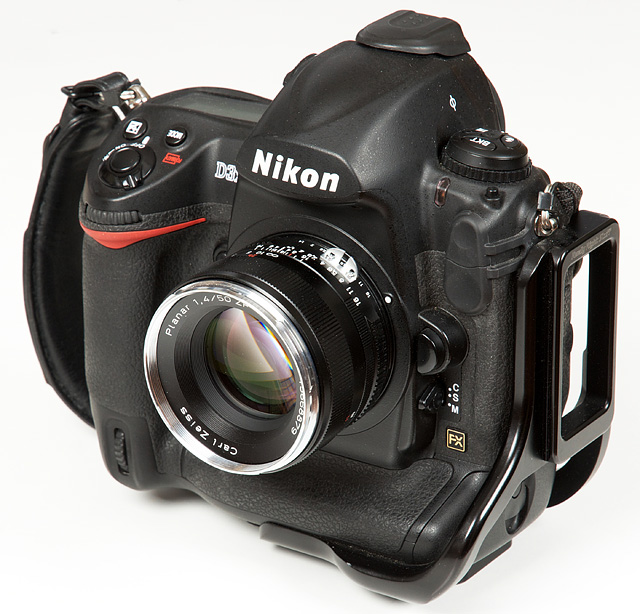|
Page 1 of 3

Review by Markus Stamm and Klaus Schroiff, published May 2011
Introduction
Carl-Zeiss is one of the legendary brands in the business thanks to a history dating back to the very beginnings of the optical industry. Regarding the number the key designs it can almost be described as its cradle (established in 1846). The company was a major player in the photography market till the late 1970s when the well-known Japanese competition started to introduce AF SLRs and Contax (Zeiss supplied the system lenses) didn´t follow. Zeiss remained active and successful in other optical markets (inc. medium format lenses) but fell asleep regarding its consumer (35mm) photography business till a new prince (Sony) kissed snow-white (Zeiss). Thereafter it made Boooom and we´re now seeing several new products from Zeiss for Sony (ZA) but some of the all-time classics were adapted to Nikon, Pentax and EOS users (plus a few M42 variants). These classic lenses are designed in Germany but made by Cosina in Japan under Zeiss quality control.
In the scope of this review we will have a look at the Zeiss Planar T* 50mm f/1.4, a manual focus standard lens. The original symmetrical Planar design was invented in 1896(!) but its various incarnations survived the storms of time. In fact it is the most successful and most copied design in the business. "Planar" originates in the German word plan ("plane" in English) and refers to the flat reproduction characteristic (minimal field curvature).
The lens is available for Canon (ZE) and Nikon (ZF, ZF.2) cameras and as screw-mount M42 version (ZS). There also was a K-mount version for Pentax cameras (ZK), however Zeiss decided to discontinue the ZK-line in 2010. In addition, the ZF-line remains available, but is now marketed for industrial applications only.

The build quality of the full-metal Zeiss lens (brass with chromium-plated brass front bayonet) is superb. The fluted focus ring feels exceptionally well damped. The supplied lens hood is made of metal as well. Unfortunately the high build quality is not inherited to the lens front cap which feels quite fragile and is a bit fiddly to handle. Even though there are two spring loaded grips, the cap is hard to pinch, difficult to apply and can come off too easily.
The front element does not rotate so using a polarizer remains easily possible. The lens extends marginally when focusing towards close distances.

The Planar is a manual focus lens just like the rest of the gang. However, the focus indicator in the viewfinder remains active so there's a little guidance here at least.
ZF vs. ZF.2
The tested ZF version of this lens has no electronic coupling. Consequently, it offers full metering compatibility only with higher grade Nikon DSLRs that allow you to manually enter focal length and maximum aperture for non-CPU lenses. All current FX DSLRs (as of early 2011) offer this feature.
The aperture needs to be set on the lens and can be set in half-stop increments. Technically, ZF lenses correspond to Nikkor Ai-S lenses.

The newer ZF.2 version of the lens features an integrated CPU, which makes it an equivalent of an Ai-P lens. This ensures metering compatibility with all current Nikon DSLRs. When locked at the smallest aperture (marked in orange colour), the aperture can be set on the camera with any current Nikon DSLR (just as with any AF lens that features an aperture ring). There's an unlock button on the lens to release the aperture ring and set the aperture on the lens instead. However, this will lead to an error with lower grade Nikon DSLRs. Only higher grade bodies feature a custom function that allows the aperture to be set this way.
The above image shows the differences between ZF and ZF.2 lenses (using the Planar T* 85/1.4 as an example).
| Specifications |
|---|
| Optical construction | 7 elements in 6 groups |
| Number of aperture blades | 9 |
| min. focus distance | 0.45 m (max. magnification ratio 1:6.7) |
| Dimensions | 66 x 45 mm |
| Weight | 330 g |
| Filter size | 58 mm (non-rotating) |
| Hood | barrel shaped, metal, bayonet mount (supplied) |
| Other features | CPU and camera controlled aperture (ZF.2 version only) |
|